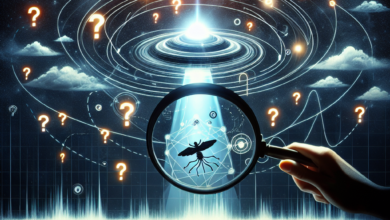Exploring Realistic Goals for Statistical Analysis and Machine Learning Using UFO Data
Innovative Approaches: Achieving Realistic Goals in Statistical Analysis and Machine Learning for Unidentified Aerial Phenomena (UAP) Data
As interest in Unidentified Aerial Phenomena (UAP) grows, researchers are setting realistic goals for statistical analysis and machine learning applications to deepen our understanding. Here’s a breakdown of some achievable objectives:
-
Pattern Recognition and Anomaly Detection: Utilizing machine learning algorithms to identify patterns and detect anomalies in UFO sighting reports.
-
Data Classification: Developing models to classify sightings based on various features such as time, location, and physical characteristics.
-
Predictive Modeling: Creating predictive models to forecast future sightings based on historical data.
-
Geospatial Analysis: Conducting geospatial analysis to map sightings and identify potential hotspots.
-
Natural Language Processing (NLP): Applying NLP techniques to analyze the textual data from witness reports for common themes and entities.
- Clustering and Correlation Analysis: Leveraging clustering techniques to group similar sightings and performing correlation analysis to explore relationships between various factors.
These goals offer a blend of scientific rigor and technological innovation, paving the way for more objective and data-driven insights into the enigmatic world of UFOs.
Breaking News: Machine Learning Set to Unlock New Insights in UFO Research
The realm of Unidentified Flying Objects (UFOs) has always been shrouded in mystery, but the landscape is about to change. With an abundance of UFO data now available, cutting-edge advancements in machine learning offer promising avenues to garner fresh insights. The latest machine learning tools, especially potent in analyzing text data, could revolutionize the way we understand UFO phenomena.
However, the design of any analysis workflow must align with specific research objectives. Options abound: researchers could cluster reports based on similarities, employ advanced search techniques to isolate cases with particular characteristics, or scrutinize consistencies and inconsistencies across various groups of cases.
Despite these powerful tools, a crucial question remains: What should the specific goals of this analysis be? In other words, what exactly do we hope to uncover about UFOs through these new methodologies? As the discourse continues, the potential for groundbreaking discoveries in this enigmatic field has never been more tantalizing.
Stay tuned for more updates as we dive deeper into the potential of machine learning in unraveling the mysteries of the skies.




